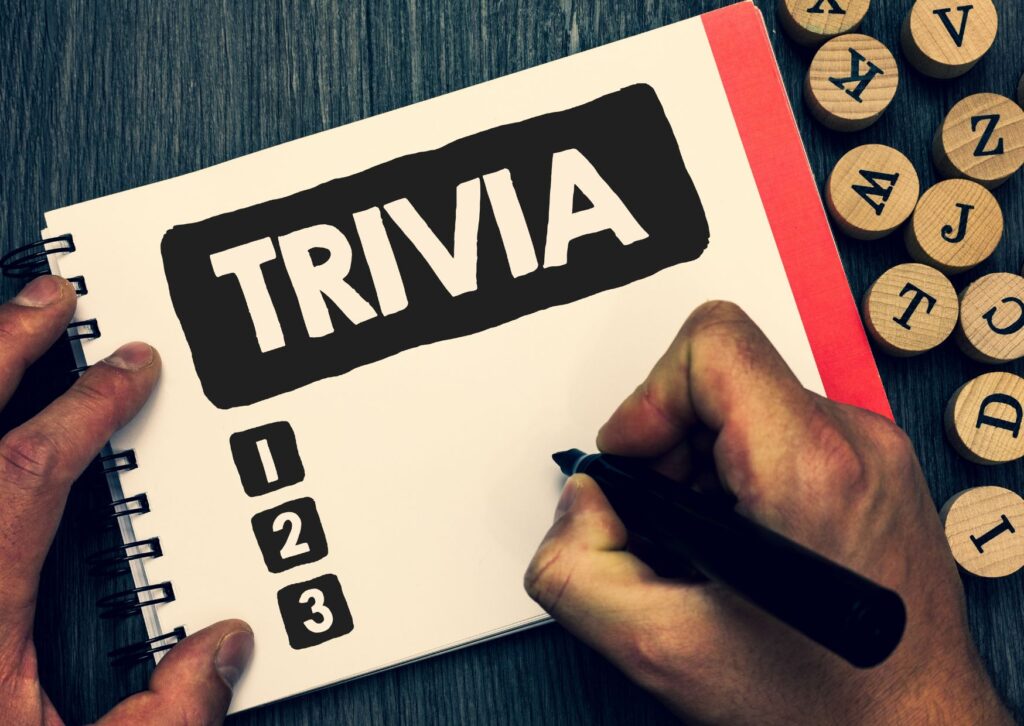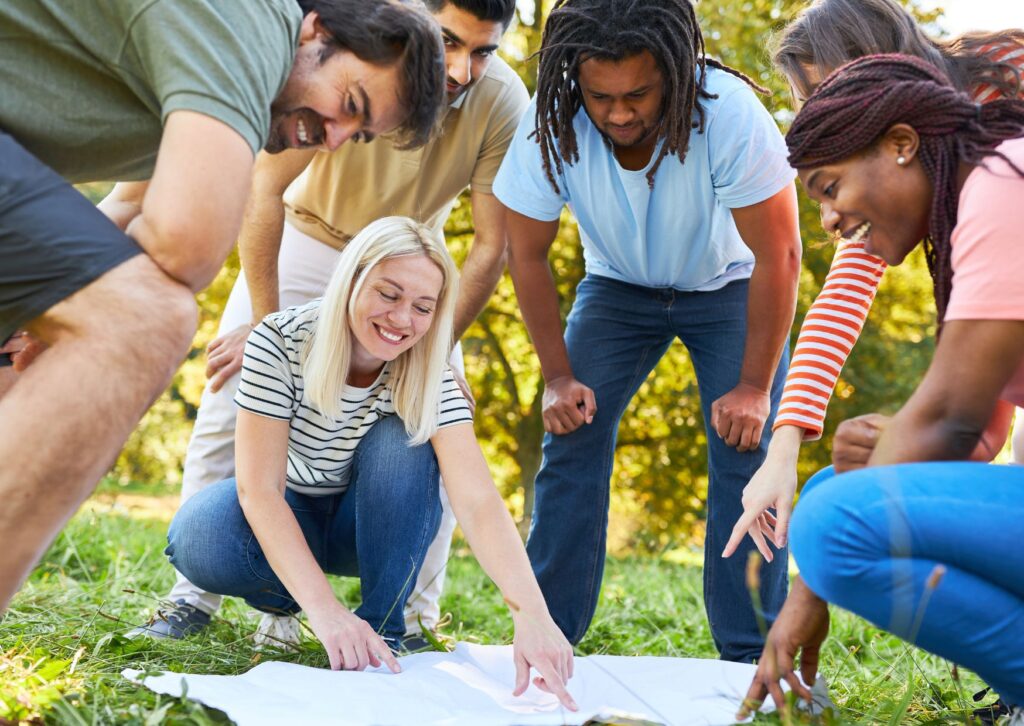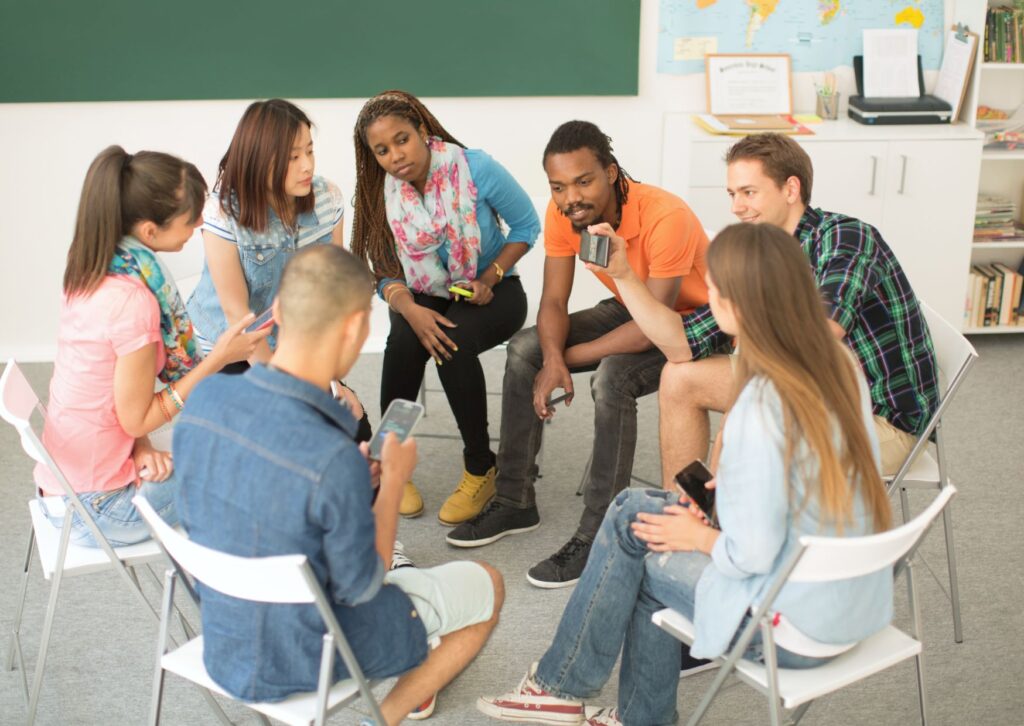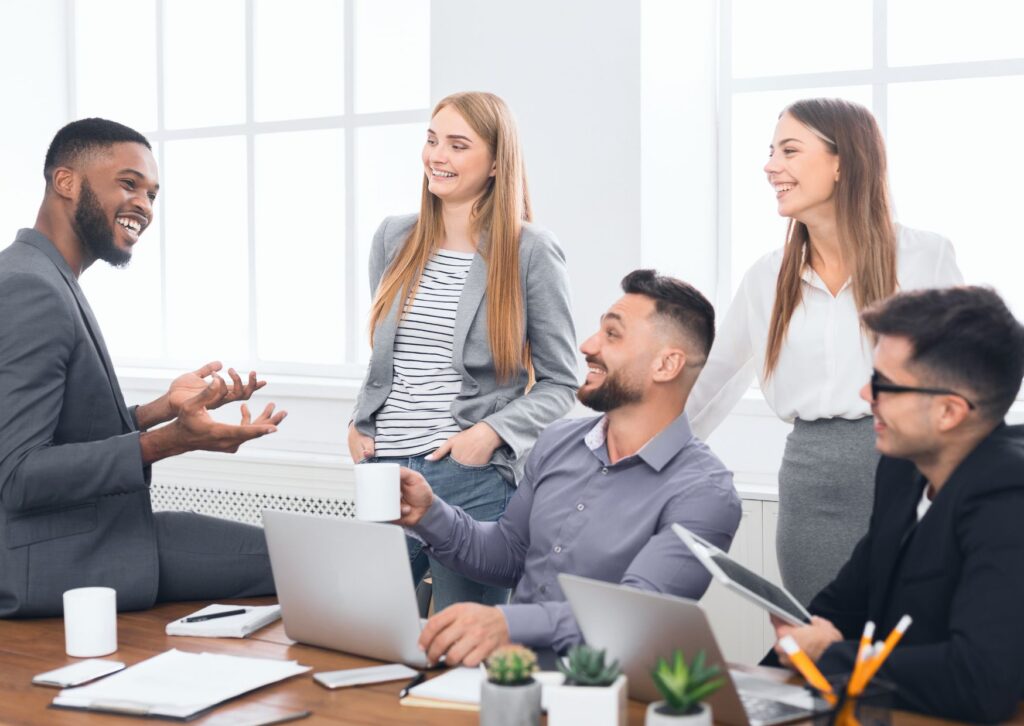15 Employee Teamwork Games to Boost Morale and Improve Collaboration
Employee teamwork games are simple yet powerful activities that strengthen relationships, unleash creativity, and foster a thriving work environment.
This isn’t just about having fun, it’s about crafting a dynamic, harmonious, and productive workplace where everyone feels connected and valued.
So, whether you’re a manager looking to energise your team, an HR professional aiming to boost employee morale, or a team member eager to better connect with your peers, this blog is your treasure trove.
Dive in and discover a variety of engaging games, practical tips, and insightful information to elevate your teamwork to extraordinary heights.
Contents
An Alternative to Employee Teamwork Games
Tips for Facilitating Effective Employee Teamwork Games
What Makes a Good Employee Teamwork Game?
Benefits of Employee Teamwork Games
How to Tailor Employee Games for Your Team
Measuring the Effectiveness of Employee Teamwork Games

15 Employee Teamwork Games
Game #1: “The Human Knot”
This is a classic team-building game that encourages problem-solving and communication.
Objective: Untangle the human knot without breaking the chain.
Materials: No materials required.
How to Play:
- Have everyone stand in a circle, shoulder to shoulder.
- Each person should reach across the circle with their right hand to grab another team member’s right hand.
- Next, everyone should reach in with their left hand to grab a different team member’s left hand.
- The goal is to untangle the knot and end up in a circle without letting go of each other’s hands.
Team Skills Targeted: Communication, patience, and problem-solving.

Game #2: “Minefield”
This game improves trust, communication, and active listening.
Objective: To navigate a teammate through a “minefield” blindfolded.
Materials: Blindfolds, a variety of safe objects (e.g., balls, cones, boxes) for the “mines.”
How to Play:
- Set up the “minefield” by randomly placing your objects in a defined space.
- Divide employees into pairs. One person is blindfolded while the other acts as the guide.
- The guide must direct the blindfolded teammate through the minefield using only verbal instructions.
- If a “mine” is hit, they must start from the beginning.
- Switch roles and repeat the process.
Team Skills Targeted: Trust-building, communication, and active listening.

Game #3: “Back-to-Back Drawing”
This game boosts communication and clarity in giving instructions.
Objective: Accurately recreate a drawing based solely on verbal instructions.
Materials: Paper, pens, and a set of simple images or shapes.
How to Play:
- Divide your employees into pairs and have them sit back-to-back.
- One person (the describer) gets a random image. The other person (the drawer) gets a pen and paper.
- Without revealing what the image is, the describer must give verbal instructions to the drawer to recreate the image.
- At the end, compare the original image with the drawn picture.
Team Skills Targeted: Clear communication, active listening, and detail orientation.

Game #4: “Marshmallow Challenge”
This game is great for problem-solving, creativity, and innovation.
Objective: Build the tallest free-standing structure with a marshmallow on top.
Materials: 20 sticks of spaghetti, one yard of tape, one yard of string, and one marshmallow for each team.
How to Play:
- Divide your employees into teams.
- Each team gets the same set of supplies.
- They have 18 minutes to build the tallest structure they can, with the marshmallow on top.
- The team whose structure stands the longest wins.
Team Skills Targeted: Creativity, innovation, collaboration, and problem-solving.

Game #5: “Two Truths and a Lie”
This game encourages team bonding and helps team members learn more about each other.
Objective: Guess which statements are true and which one is a lie.
Materials: None needed.
How to Play:
- Each team member prepares three statements about themselves: two truths and one lie.
- One by one, each team member shares their three statements in random order.
- The rest of the team has to guess which statement is the lie.
Team Skills Targeted: Team bonding, communication, and active listening.

Game #6: “Zoom In Game”
This game enhances team collaboration, communication, and encourages thinking outside the box.
Objective: Identify an object based on a highly zoomed-in image.
Materials: A set of highly zoomed-in images.
How to Play:
- Divide your employees into teams.
- Show a zoomed-in image to each team.
- The teams need to work together to guess what the image is.
- The team that guesses correctly in the least amount of time wins.
Team Skills Targeted: Collaboration, communication, and creative thinking.

Game #7: “Picture Pieces Game”
This game enhances team communication and highlights the importance of the big picture in teamwork.
Objective: Reproduce a picture from memory.
Materials: A complex, colour image and drawing materials for each team.
How to Play:
- Divide your team into small groups and give each group a different piece of the picture.
- Each group has five minutes to recreate their piece of the picture as large as possible.
- Once all pieces are recreated, the team has to figure out how to assemble them into the original image.
Team Skills Targeted: Memory, communication, problem-solving, and teamwork.

Game #8: “Egg Drop Challenge”
This game promotes innovative thinking, problem-solving, and collaboration.
Objective: Protect an egg from breaking when dropped from a significant height.
Materials: A variety of materials for building (e.g., straws, tape, cotton balls), and raw eggs.
How to Play:
- Divide your employees into teams.
- Each team gets an egg and the same set of materials.
- Teams have a fixed amount of time (30 minutes to 1 hour) to construct a contraption to protect their egg.
- From a designated height, drop each egg contraption. The teams whose eggs don’t break are the winners.
Team Skills Targeted: Creativity, collaboration, problem-solving, and resource management.

Game #9: “Charades – Workplace Edition”
This game encourages creativity, communication, and can be tailored to the office environment for fun and relatability.
Objective: Guess the word or phrase being acted out.
Materials: A collection of work-related words or phrases on slips of paper.
How to Play:
- Divide your employees into teams.
- One member from each team picks a slip of paper and acts it out without speaking or making sounds.
- Their team has to guess the word or phrase within a time limit.
- Rotate turns and the team with the most correct guesses wins.
Team Skills Targeted: Communication, creativity, and quick thinking.

Game #10: “Idea Building Blocks”
This game enhances brainstorming skills, encourages creativity, and helps develop strategic thinking.
Objective: Generate new ideas and build on them.
Materials: Sticky notes, pens.
How to Play:
- Pick a topic related to your work or industry.
- Team members write down ideas on sticky notes and stick them on a board.
- Members then use these ideas as “building blocks” to generate new, more complex ideas.
- After a set time, review and discuss all the ideas generated.
Team Skills Targeted: Creativity, strategic thinking, and collaboration.

Game #11: “Escape Room Challenge”
This game enhances problem-solving skills, critical thinking, and teamwork under pressure.
Objective: Solve clues to “escape” within the given time limit.
Materials: You can use a physical escape room location, or there are online virtual escape rooms available as well.
How to Play:
- Divide your employees into teams.
- Each team enters the escape room (physically or virtually) and has to solve the puzzles within a set time limit to escape.
- The first team to escape wins. If no team escapes, the team that solved the most puzzles wins.
Team Skills Targeted: Problem-solving, critical thinking, and teamwork under pressure.

Game #12: “Office Trivia”
This game promotes team bonding, engages employees, and can also be used to learn about company culture or industry knowledge.
Objective: Answer trivia questions correctly.
Materials: A list of trivia questions related to your workplace, industry, or general knowledge.
How to Play:
- Divide your employees into teams.
- Ask a trivia question. The teams discuss and provide their answer.
- The team that gets the correct answer gets a point.
- The team with the most points at the end wins.
Team Skills Targeted: Team bonding, knowledge sharing, and communication.

Game #13: “Scavenger Hunt”
This game fosters teamwork, problem-solving, and can provide a fun break from the routine.
Objective: Find all the items or complete the tasks on a list.
Materials: A list of items to find or tasks to complete.
How to Play:
- Divide your employees into teams.
- Give each team a list of items to find or tasks to complete.
- The first team to complete all the items/tasks or the team that completes the most within a given time frame wins.
Team Skills Targeted: Teamwork, problem-solving, and communication.

Game #14: “Build a Bridge”
This game improves collaboration, planning, and creative thinking.
Objective: Build a bridge using given materials.
Materials: A variety of materials like Legos, straws, cardboard, tape, etc.
How to Play:
- Divide your employees into teams.
- Each team receives an identical set of building materials.
- The goal is to build the most stable, aesthetically pleasing, or creative bridge within a set time limit.
- You can set up specific criteria for judging, such as bridge length, weight it can hold, etc.
Team Skills Targeted: Collaboration, planning, and creative thinking.

Game #15: “Story Round-Robin”
This game enhances creativity, listening skills, and can be a fun, light-hearted activity.
Objective: Create a story collaboratively.
Materials: None needed.
How to Play:
- Gather your team in a circle.
- Start a story with a sentence or two.
- Going clockwise, each team member adds a sentence to the story.
- The goal is to build an interesting, coherent story. The game can last as long as desired.
Team Skills Targeted: Creativity, active listening, and teamwork.

An Alternative to Employee Teamwork Games
At Loving Life, we deliver a range of fun and engaging Wellbeing workshops to bring your teams together to inspire, educate and motivate employees.
For more info, get in touch
Tips for Facilitating Effective Employee Teamwork Games
Team-building games can be a powerful tool to enhance employee wellbeing, foster teamwork, and boost morale. However, the success of these games largely depends on how they are facilitated. Here are some tips to make your teamwork games more effective:
- Set Clear Objectives
Before the game begins, make sure the purpose and objectives are clearly communicated to all participants. Explain how the game will contribute to team skills development or bonding.
Example: “We’re doing the ‘Human Knot’ game to strengthen our problem-solving skills and improve communication among the team.”
- Create a Safe and Inclusive Environment
All activities should be inclusive and respectful, ensuring all team members feel comfortable participating. Avoid games that could alienate or embarrass someone.
Remember: “Each game we play aims to build positivity, mutual respect, and a sense of inclusiveness.”
- Be Mindful of Time
Respecting your team’s time is essential. Keep the activities concise and to the point. If a game is projected to last 30 minutes, try to stick to that timeframe.
Key Tip: “Time is precious; effective team games are short, focused, and engaging.”
- Encourage Open Communication
Ensure everyone feels comfortable expressing their ideas. Encourage each team member to share their thoughts and reinforce the importance of each contribution.
Encouragement: “All ideas and opinions matter. Let’s hear everyone’s thoughts, as every perspective enriches our team’s dynamics.”
Remember, the aim of these games is to enhance team cohesion and employee wellbeing, so keep the atmosphere light, engaging, and supportive.

What Makes a Good Employee Teamwork Game?
Firstly, relevance plays a critical role. A good teamwork game should align with the team’s work or objectives.
The game must serve as a platform for skill enhancement that relates directly to the tasks or challenges the team faces regularly.
Secondly, a good teamwork game should foster open communication.
It should promote dialogue and interaction among team members, ultimately leading to a better understanding and appreciation of each other’s strengths and viewpoints.
Furthermore, the game should be engaging and fun. This doesn’t mean it can’t be challenging, but the overall experience should be enjoyable.
If team members are invested and enjoying the game, they are more likely to actively participate and engage, leading to a more effective session.
Inclusivity is another important factor. The best teamwork games are those where every team member can participate equally. No one should feel left out or sidelined.
Finally, a sense of achievement is vital.
Whether it’s solving a puzzle, building something, or overcoming a shared challenge, the feeling of accomplishment fosters team cohesion and morale.
Therefore, a good teamwork game is relevant, encourages communication, is engaging, inclusive, and gives a sense of accomplishment.

Benefits of Employee Teamwork Games
Teamwork games are much more than just a fun diversion. When used correctly, they can offer substantial benefits for your team. Here are some of the key advantages:
- Enhanced Communication
Teamwork games often require participants to discuss strategies, exchange ideas, and work together towards a common goal. This can help to improve communication skills, which are crucial in any work environment.
- Boosted Morale
A fun and engaging game can do wonders for team morale. It offers a break from routine work, helps to alleviate stress, and can make employees feel more valued and satisfied in their roles.
- Improved Collaboration
Many teamwork games necessitate a high level of collaboration. Through these activities, team members can learn how to better cooperate with one another, understand each other’s strengths and weaknesses, and become more effective at problem-solving as a unit.
- Strengthened Relationships
Teamwork games provide an opportunity for employees to interact in a more relaxed, low-pressure context. This can lead to strengthened relationships, as team members get to know one another on a personal level.
- Increased Productivity
All of the above benefits – improved communication, boosted morale, better collaboration, and stronger relationships – can lead to an increase in overall productivity.
When team members are happy, communicate effectively, and work well together, they can achieve much more.
Remember, teamwork games aren’t just about having fun – they’re a valuable tool for enhancing your team’s overall performance and wellbeing.

How to Tailor Employee Games for Your Team
Tailoring games for your team involves understanding your team’s dynamics, strengths, weaknesses, and goals. Here’s how you can go about it:
- Understand Your Team’s Needs
The first step in tailoring games for your team is to understand what your team needs. Are you trying to enhance communication? Foster creativity? Build trust? The game you choose should be relevant to these objectives.
- Consider Team Dynamics
Take into account the personalities and preferences of your team members. If your team enjoys intellectual challenges, a problem-solving game could be a great fit. If they prefer physical activities, consider outdoor team-building games.
- Be Inclusive
Make sure the games you choose are inclusive and suitable for all team members. This includes considering factors like physical abilities, comfort levels, and cultural sensitivities.
- Keep it Engaging
Games should be fun and engaging to keep everyone interested and involved. Try to pick games that will challenge your team without being overly complicated or stressful.
- Provide Clear Instructions
Once you’ve chosen a game, ensure everyone knows how to play. Provide clear instructions, and be available to answer questions or clarify rules if needed.
- Debrief After the Game
After the game, take some time to discuss it as a team. What did everyone learn? How can the skills developed during the game be applied to the workplace? This reflection can make the game more meaningful and beneficial.
By keeping these tips in mind, you can tailor games that not only entertain your team but also help them grow and improve as a unit.

Measuring the Effectiveness of Employee Teamwork Games
While teamwork games can be a lot of fun, it’s crucial to understand their impact on your team. Here’s how you can measure their effectiveness:
- Observe the Team During the Game
The first measure of effectiveness is observing the team’s dynamics during the game itself. Are they communicating well? Are they working together, or does it seem disjointed? Is everyone engaged and participating?
- Gather Feedback
After the game, ask your team for their feedback. Did they enjoy the game? What did they learn?
Do they feel the game improved their skills or relationships with team members? Their responses can provide valuable insights into the game’s effectiveness.
- Monitor Changes Post-Game
Watch for changes in the team’s dynamics and performance after the game. Do you notice improvements in communication or collaboration?
Is the team more cohesive? Changes in these areas can indicate the effectiveness of the game.
- Regular Reviews
If teamwork games are a regular part of your team’s routine, it may be helpful to do periodic reviews.
Compare the team’s performance over time to see if there’s been an improvement.
You can use metrics like project success rates, communication effectiveness, or employee satisfaction surveys.
Remember, the purpose of teamwork games is not just to provide a break from work, but to enhance team cohesion and performance. By monitoring these areas, you can assess whether your games are hitting the mark.
As you conclude your exploration of the world of employee teamwork games, take a moment to reflect on the potential that lies within your team.

Remember, these games are not mere diversions, but powerful tools to unlock the full potential of your workforce.
Embrace the opportunities to strengthen communication, foster collaboration, and cultivate a positive and engaging work environment.
So, gather your team, ignite their spirits, and embark on a journey of growth and success.
Let the power of teamwork games propel you towards a future where collaboration knows no bounds.
Author
Tyler Lowe – Health & Wellbeing Speaker
BSc Sport & Exercise Rehabilitation


